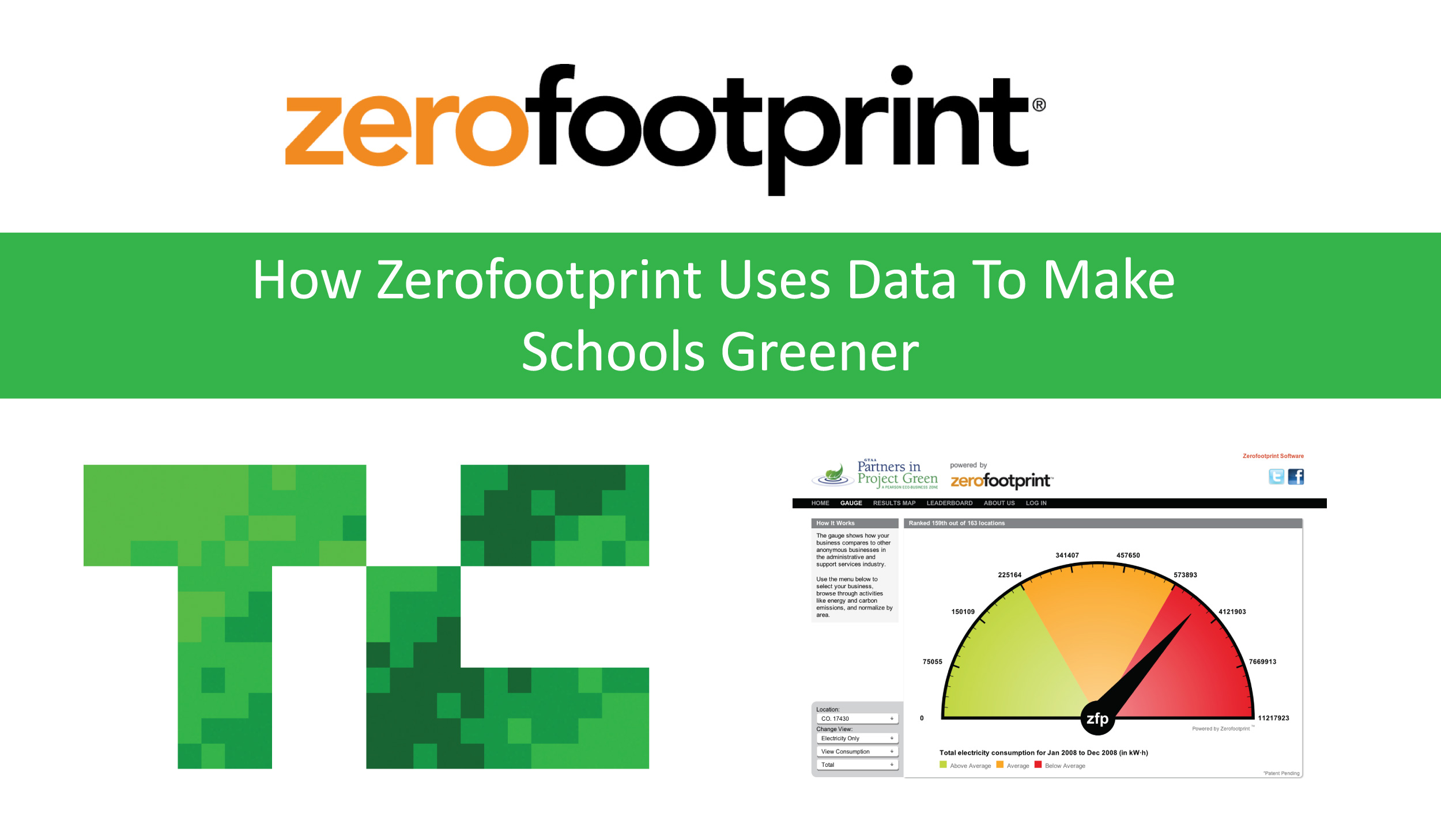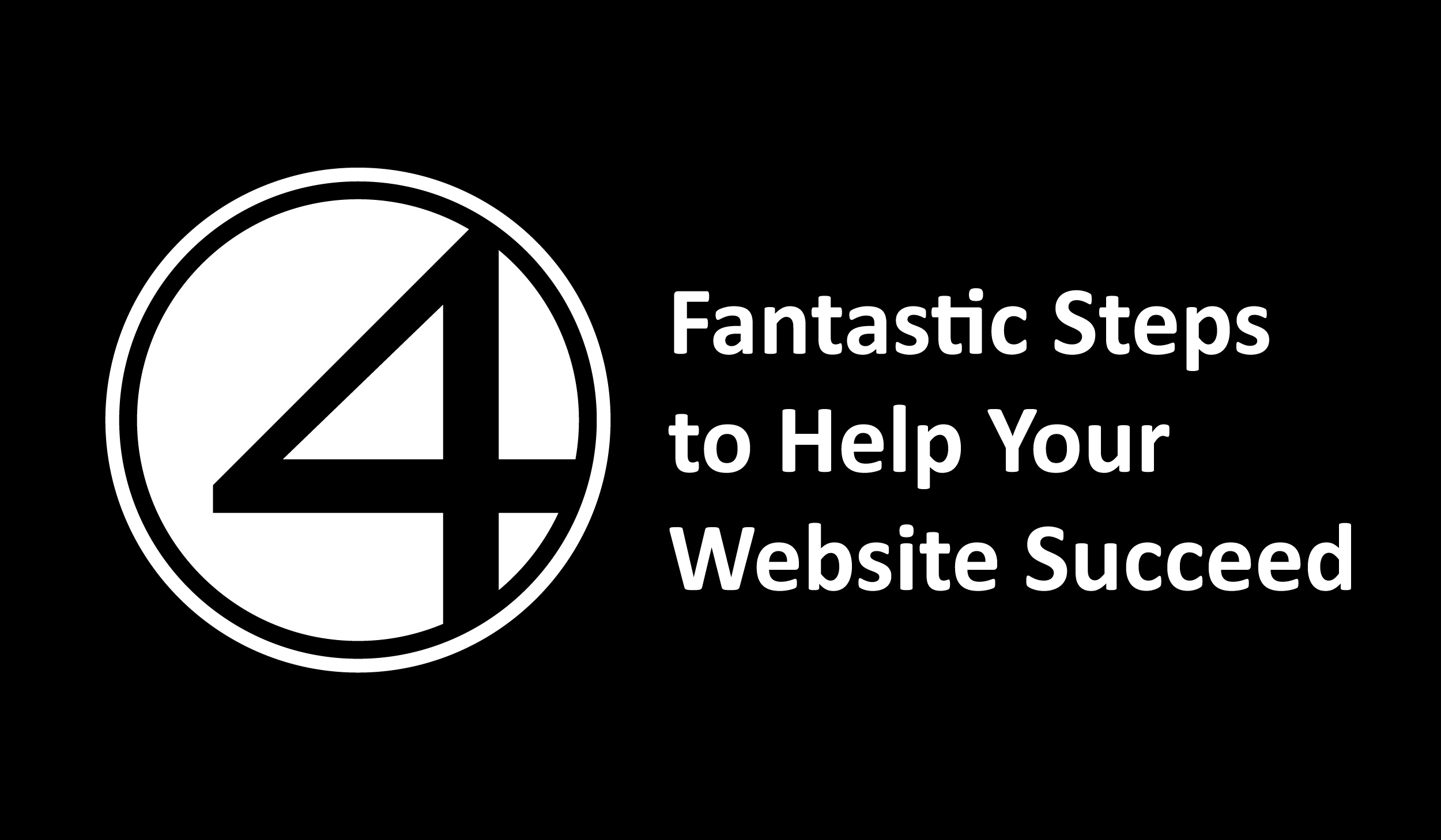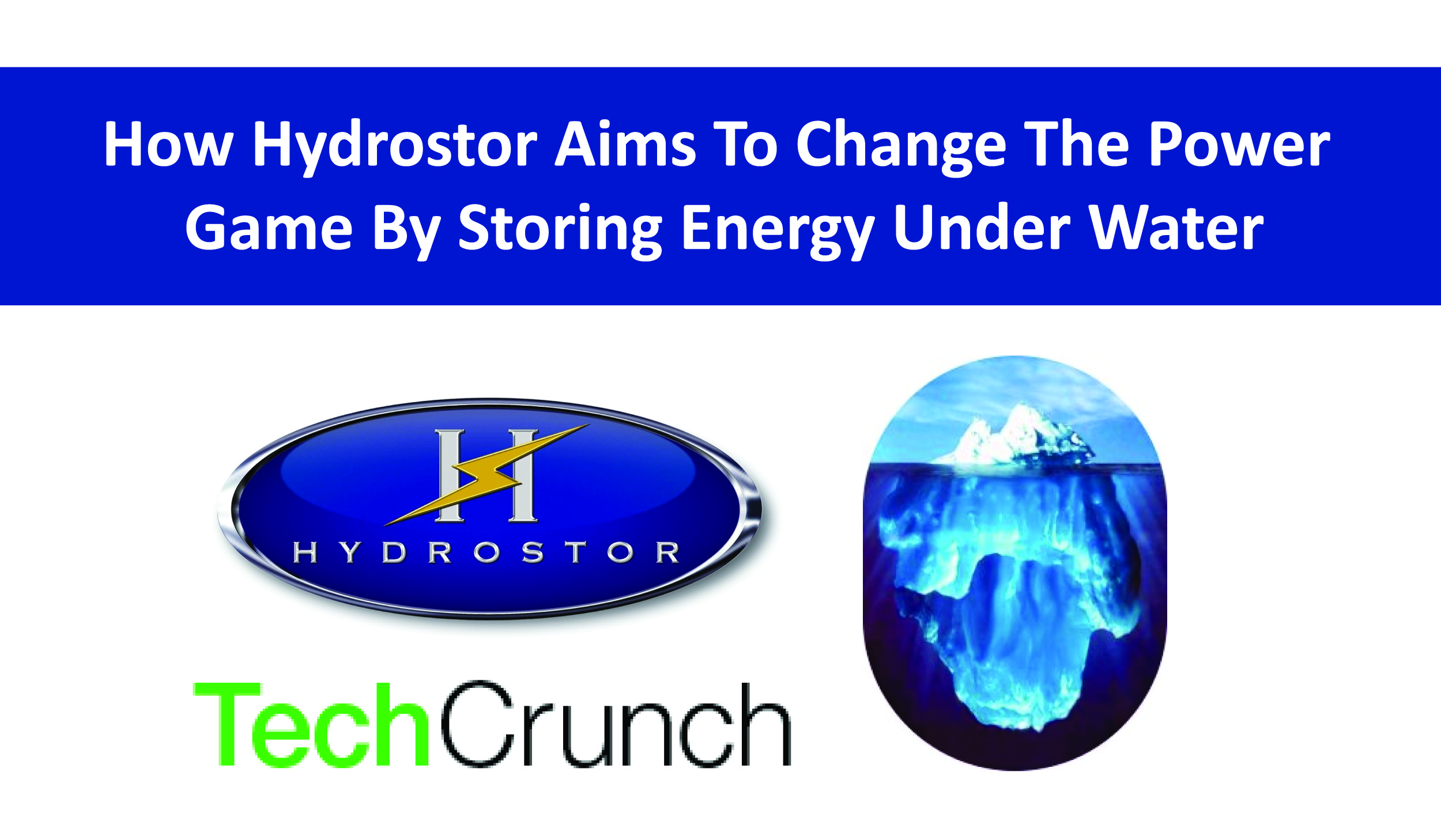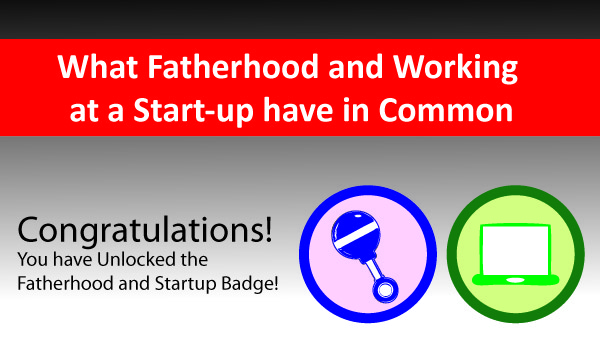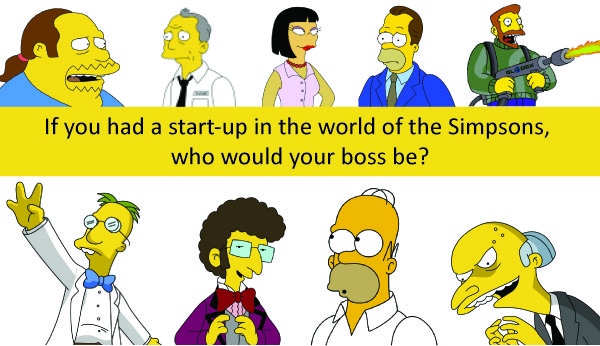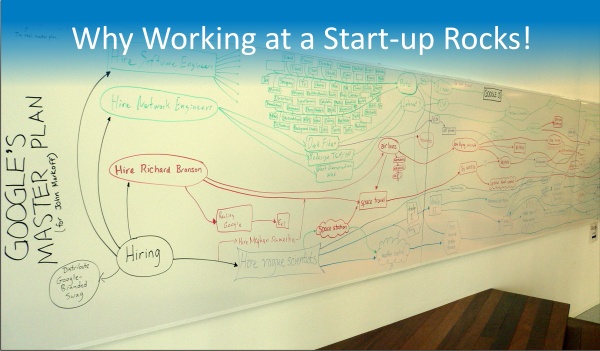he word “green” is tossed around a lot as a catchall term to describe sustainable or environmentally friendly projects, businesses, energy, and more. Green construction and architecture, for one, are proliferating across the world, but when it comes to gauging how “green” a building is, for example, one finds that there are more than a few standards by which to determine its efficiency and sustainability. Enter Toronto-based Zerofootprint: A cleantech software and services company, which is leveraging competitive benchmarking between peers to help determine the “green” factor for any given building. Ron Dembo, the founder of Zerofootprint, contends that, if you want to motivate developers to improve the efficiency of a building, one can’t simply benchmark against everyone else, because each community has a different climate. Thus, the founder says that Zerofootprint aims to focus on benchmarking buildings against other buildings within a community to achieve maximum community efficiency. Zerofootprint uses its mapping and analytics engine to correlate multiple consumption and usage data points, like power usage, costs, emissions, etc., that it then plots on an interactive map for easy viewing. Currently, the company is working with over 100 customers that include entities like school boards and municipalities, and is leveraging its data in school districts to drive change at a school-by-school level. By tracking power usage at this local level, Zerofootprint is quickly able to see which schools are using higher amounts of power and thus incurring a higher cost. Through some quick analysis, it’s able to track and see that a school board may be paying $2,500 per child in electricity vs. $800 in another school, for example. Some of these differences can be traced to age of the building, but another key component is behavior. By sharing this information with key stakeholders (including students, teachers, parents and administrators), the schools can then work to reduce energy costs. It is the hope that by reducing energy costs, school districts can focus on using those funds towards education instead of just keeping the lights on. According to Dembo, through realtime feedback with its system, Zerofootprint has already been able to help certain schools achieve 20 percent energy reduction. He also says that it’s been interesting to see the reaction from stakeholders for installations that have not even taken root. Zerofootprint has recently deployed their solution with the Halton Catholic District School board. “Even in the early stages of this initiative, teachers and principals are excited about using the Zerofootprint tool to engage students and encourage behavioral change when it comes to energy use in our schools. Our Board looks forward to using this tool to track carbon emissions and...
Read More1. Create several key use cases for people to use your site – Why are people on your site? You spent energy getting them there, so now what? I always advocate to create a really few well-defined and streamlined use cases. You may already have a working site or be in the process of designing it from scratch. Ask yourself this question: If a visitor to your site was a tourist, what would you like them to see in your “site” or “city”? Are you sending them to a bad neighbourhood, or are they seeing the sights? Here are some examples of use cases: Get them to sign-up Find out more about your service/product – watch a video or read more Get them to purchase or sign up for your product/service These seem simple stupid, but it is shocking how many sites (especially web start-ups) don’t seem to have simple use cases defined to push people to these important steps. Don’t be one of those sites, make sure you have tightly defined use cases and your website is tuned around them. 2. Make it super easy for them to sign-up, so you can get their information – When a person comes to your site and is about to make the leap of faith to share information, make sure you are there for them. This is a big psychological leap for many; you need to make sure you do the right things to help them take the next step. Here are a few suggestions: Keep your form clean (don’t ask for information you don’t need) – People don’t want to feel like they are doing their taxes by entering countless pieces of personal information. Keep things lean and mean, get some initial buy-in and you can always ask more questions after you get to know them. Think of it like dating. Add options like Facebook or Twitter connect – This has become a no-brainer these days. Gone are the days where some get uber-concerned about their personal profile (well some people at least). It is amazing how the click of one button vs. filling out a form has reduced inhibitions to share information. Style sometimes means substance – People are used to the finer touches when it comes to UI. This could be a refined button, and it could be AJAX/JS pop-ups. The days of boring Post forms are dead. Take a little bit of time and even a bit of money on your primary form to ensure it looks the part in today’s web. People are not only looking for these refinements, they are expecting them. The bar is...
Read More1. Minimal Viable Product thinking can be a trap – there has recently been a huge movement toward creating a “minimum viable product” and then going out to market as quickly as possible. I would argue it is important to temper this trend. This has turned into a tendency to quickly roll out half-baked functionality because developers believe they are following the MVP mantra. Well thought out features that deliver value, even if they take a bit longer to come to market, will (in my opinion) deliver more ultimate value to the product and to the user experience. I am all for iterating something early on once it is in the hands of the customer, but I would argue that some companies have misconstrued this and roll out an untested, half written piece of functionality 2. Keep an eye on what really matters – Many good product managers fight with this all the time. How many times do people from different lines of business ask questions like “wouldn’t it be cool if it could do this?”. When I really boil it down, there are only 3 reasons why you should build any given feature in an early-stage start-up. Here they are: It will help make money – If you are a start-up working towards break-even, then this needs to be ever present in every decision you make. If it won’t help move the needle and get you closer to profitability, you may want to reconsider it. I come from a school of thought in which you want straightforward business models with a straightforward path to cash. There are few out there with unlimited runways and you always need to be concerned with this in your approach. It will improve the user experience – User experience has become such a core function to any product manager. Is this easy to use? Do people get pissed off when they have to use key features on the site? Will it cause people to abandon your site? UX can be a core competency and key differentiator. Always focus on this! Even if it is as simple as a nicely done pop-up or a cleanly designed button, it all matters when it comes to UX. It will improve efficiency and scalability – Will this feature allow you to do more with less, does it allow you to hold off hiring more people to do the same function, or does it make the people you have more effective? You should always consider this to stay lean and mean as possible 3. Create a vision for the product – it is important to not limp forward from...
Read MoreThis post was originally posted on Tech Crunch here There has been a fair bit of concern in recent years about the ability of our power plants to supply adequate electricity during periods of peak demand. Hydrostor, a Toronto-based company, is taking a different approach in offering a solution that allows plants to store their power using compressed air in underwater storage tanks. More specifically, Hydrostor takes the excess energy created during periods of off-peak consumption and converts that energy into compressed air via an air compressor, which in turn inflates accumulators placed under the surface of a body of water. The depth of the water keeps the air at a constant pressure, helping to store the energy potential. When power is required, the air is released through an expander and electricity is produced. Through the heat-exchanger, modern compressors and expanders, the system approaches adiabatic operation, achieving efficiencies over 70 percent. This technology has the potential to address the intermittent nature of renewable energy, help decongest transmission and distribution lines, and create better efficiencies of existing generation. To date, Hydrostor has relied heavily on government and research grants to get started. They are now seeking further funding from both private sources and government groups to expand. They are currently in the pilot stage of a number of projects. The benefits are obvious—tapping into a store of power when consumers demand it, rather than constantly maintaining a higher-than-normal supply would create a more efficient network. Hydrostor estimates that over 50 percent of the world’s biggest load centers are located by water and would therefore be candidates for their system. If this model proves true, it would save billions of dollars and the years it takes to build new generators. Hydrostor is not looking to replace new generation projects, but merely to make the existing grid more effective and reliable. The company was founded by Cameron Lewis in 2010 when he identified the need for a more efficient way to store electricity. Cameron estimates that the cost of storing energy using his system is 50 percent cheaper than storing electricity via batteries. He came upon the idea while working at a wind farm in Northern Ontario, and saw the potential of power storage. Alternative power sources, such as wind, require some sort of power storage mechanism to create an augmented base load. For the uninitiated, “base load” refers to the minimum amount of power that a utility or distribution company must make available to its customers at any time. A base load is traditionally created by running plants 24/7 to generate the required energy. One of the traditional knocks against renewable energy...
Read MoreI became a father over 5 months ago, and it has definitely been a game changer in my life. I have also been involved in several start-up companies both before and during my foray into fatherhood. However, since I became a father, I found there were some very interesting similarities to working in a start-up. 1. Noticing the smallest patterns Whether it is managing your product or your baby, it is all about spotting the small patterns. What is causing them to respond, what do they like, what don’t they like? It could be the slightest difference in what you do or how you do it but it can have an impact. Discovering those patterns is key in helping to scale your business or keep your baby happy. If you are able to discover what makes your baby happy, you can replicate it, and use that knowledge in other situations. Feedback is key to the entire operation. Granted, a baby’s cry is significantly more ambiguous than a clear pattern in business, but over time you start to learn what they need. Now, I wish that my baby was as easy to understand as my customers, but again it requires a combination of intuition and testing in order to figure out the best way to approach things. Start-ups, like fatherhood, require constant and regular iteration. If your baby is not responding favourably you can’t keep doing the same wrong thing for a day, a week or a month. Start-ups are no different, from the standpoint that you can’t afford to sit on bad strategy or tactics long. In learning to live life with the baby, you need to see how the situation evolves and continually iterate while noticing patterns in the chaos. 2. Serve multiple constituents I find you need to serve multiple constituents when you become a father. Think about it this way – your baby is your client, your wife is your co-workers and your parents are your investors. Your baby is everything, and you need to be responsive and serve their needs. Respond in a timely fashion and keep them happy. With a baby, your pay-off is a smile that warms your heart. The correlate pay-off in business is word-of-mouth referrals from your clients. Your wife/partner is in many ways your co-worker or staff. You are both working together towards a common purpose, but sometimes get worn down by the constant demands of the baby (or client!). In this case, it is important to look for opportunities to alleviate stress and do little things to show that you care even in the face of adversity. Sometimes a...
Read MoreThe Simpsons, like the real world, is filled with varied personalities. This blog post breaks down some of the characters from the Simpsons and reveals some interesting personality types that seem to correlate with real-life start-up bosses. Here is a brief synopsis of a few Simpsons’ characters and their “boss personas”. Hank Scorpio – The Dream Boss Background: Hank was the Super Villain who lured Homer to Creek to run his nuclear weapons division. Hank was down to earth, yet worldly. He was an expert recruiter, and able to bring in top talent (although Homer is questionable) and get them to perform. Hank was accessible, highly personable and very smart. He wasn’t a micromanager and put faith in his management team, namely Homer. Characteristics: Highly charismatic, goal oriented and well-funded and not afraid to roll up his sleeves Summary: Hank was a very successful person and he was able to motivate his employees. Even when Hank’s business was in trouble, he led by example. Hank wasn’t afraid to get his hands dirty by taking a flamethrower to the government agents who invaded his operation. At the end of the day he prevailed, and was good enough to reward Homer by fulfilling his dream of owning an NFL team. Homer Simpson – The Charismatic Fool Background: Homer has had the chance to be a boss on many occasions, but the one instance that comes to mind is when he was asked to run a nuclear power plant for super villain Hank Scorpio. He cared about his employees, but didn’t personally have much skill. Despite Homer’s previous experiences, he was still well ahead of the Chemical Weapons and Weather Machine Divisions by motivating his staff. When his employees were working hard to get their work done, he noticed they were getting tired so he ordered hammocks for them. And really, who doesn’t like spending time at the Hammock district down on 3rd? Characteristics: Lazy, charismatic, temper problem Summary: Homer may not have been the best boss but he was able to inspire his team onto success. What he lacked in technical ability he delivered in charisma and heart. He was also cognisant that environment plays a role in a team’s productivity. Professor Frink – The Techie Background: Howard Frink is the prototypical techie. Frink is constantly designing and creating new inventions, but doesn’t consider whether the market needs or wants his solution. His experiments or prototypes would typically blow up in his face after he had given them a very long and wordy title. Characteristics: Highly intelligent, can be unfocused, out of touch with the customer Summary: While he is a...
Read More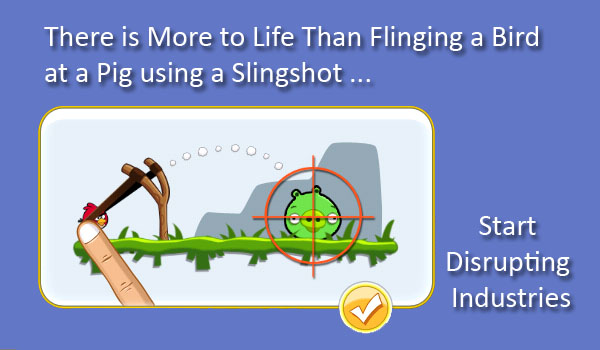
There is More to Life than Flinging a Bird at a Pig Using a Slingshot – Start Disrupting Industries.
I really enjoyed the post by Michael Karnjanaprakorn last week titled “Stop Building Apps and Start Disrupting industries”. I think his point is well considered and very indicative of our industry right now. Peter Theil alluded to this during TechCrunch Disrupt last year when he talked about the lack of people tackling huge issues in Silicon Valley, because it is just easier to create another social gaming app. So if we agree with Michael’s premise that we need to start disrupting industries, the question becomes how to do it. I do have to say it is harder to disrupt industry now than it was when the initial web boom occurred. The knee-jerk reaction was to put everything onto the web to “make things easier”. In some cases, industries were indeed transformed, but others it fizzled out. For example, how many of you do your grocery shopping online? History has repeated itself again, but now the knee-jerk reaction du jour is to turn everything into an app. While it may be the au courant thing to do, does it really improve the process or deliver a better user experience, does it push the discussion forward? One of the initial jobs I took in the tech space was process re-engineering. I would examine internal processes for a company then look for waste inefficiency, unnecessary redundancy or anything else that didn’t make any sense. It was my job to turn those processes, good or bad, into process flow diagrams where I would proceed to tear them apart. After I tore them apart, since I was the junior member at the time, I would talk to my senior colleague and try to find a way to present to the management of that company in a constructive manner that they had a process mess. When I would ultimately present my findings to management teams, I would get a series of winces and pained faces. In one particular case, a manager stood up during the meeting and said “We have been doing this for 10 years and we ain’t going to change now”. Typically what would happen is then they would ask me to present my solution for fixing their problem. Sometimes our solutions were implemented; sometimes they went back to business as usual. In each instance I thought, what if another company was to implement these changes, how would they compete? Going back to Michael’s article I couldn’t help but agree but also ponder what next? So let me take this opportunity to post a potential toolkit for disrupting industry for good, leveraging my humble beginnings in process engineering. Here are a few ways...
Read MoreFor the last 20 years, I have been coming to Muskoka (more specifically, Huntsville) for long weekends and vacations. My family has owned a cottage up here for most of this time. Laura and I hope to build our own retreat up here someday soon. Here are some of the things that keep me coming back to Muskoka: Reconnect with Nature – It would be an understatement to say that I am a big tech guy. There isn’t a gadget I don’t own or aspire to possess. I do, however, like disconnecting from technology from time to time. Whether it be the lake, the rocks or the trees, there is something calming about it. Others however don’t like disconnecting. One morning I was sitting on the end of the dock with a fresh cup of coffee. I was enjoying watching the pristine glass smooth water when I saw a man gliding by in a fishing boat. I figured he was getting out early to get some fishing done. Little did I know that he had his laptop out, and was trying to mooch our unprotected Wifi signal. Algonquin Park is only 30 minutes away and always great for a walk through the wilderness. When I was younger I would take my canoe up there and go on adventures into the wilderness. Taking conference calls on the beach – There is something calming about taking a conference call from the beach or from the end of the dock. No matter how stressful the call is or who I am on the call with, having my feet in the lake just seems to be naturally calming. As an aside, I tried the same thing in my office before but unfortunately it didn’t have the desired effect and was frowned on by others in the company. Long afternoon naps – For those who know me, I am usually working crazy hours. It’s a very nice change of pace if I am able to have a good nap and catch up on some sleep. Disconnecting from worrying about a deadline or catching up on work is always a bonus. There is something so disarming about hearing the swaying leaves in the breeze and escaping stress by having a nap on a bed or a hammock. Board games that turn into epic battles – Whether it be a rainy day or a late evening, a good board game can quickly take center stage. Emotions run high as people try to play words in Scrabble that everyone knows aren’t words, or during the frantic race to build the first houses in Monopoly. I am...
Read MoreI have worked at a number of startups and have the scars to prove it. While it can be tough at times, it is a pretty rewarding experience that I wouldn’t trade for anything. You get to be part of really cool projects – I think one of the best parts of startups is doing cool things. Startups are always pushing the envelope, whether it is with a new idea or new disruptive way of looking at the world. So many large companies are looking for ways to slow progress, ideas or different ways of solving problems, for obvious reasons. Startups on the other hand thrive on novelty and innovation. People really are passionate about the ”idea”. In a good startup, no one mails it in. Everyone cares about taking things to the next level and making the idea work. Sometimes it can be daunting, but working on something cool makes it all worthwhile. You are excited about being the Chief Cook and bottle washer – In startups you rarely get bored doing the same thing. In the large companies I have worked in you could easily find yourself becoming Senior Analyst Level 2 and work there for 5 years doing the same thing. In both work and leisure time, I like variety, and that is the beauty of startups – you never have a shortage of new things to take on. There are always new projects that you can take on to push outside of your comfort zone. Getting outside of your comfort zone is the only really way to help expand your horizons! There are the downsides though – no one wants to deal with the fridge! A year’s worth of forgotten lunches can develop their own special funk. You got your own style – I have to chuckle to myself when I see those people wearing suits all the time. I have a graveyard of over 10 suits sitting in my closet that only get used now for weddings, funerals and the odd meeting. There is something great about showing up at work wearing a snarky t-shirt and a pair of ripped jeans. In the summer, business casual is truly business casual. Sometimes when I see people in the financial district, I don’t think I could go back. I mean, who doesn’t love wearing a Cobra Commander t-shirt to the office? Getting excited over firsts – The first registered user, your first customer, your first press mention – all of these things invigorate the team. There is such a sense of achievement (it’s like unlocking a new Foursquare badge!). Seeing something build before your eyes is...
Read MoreWhen we began planning for the child who was soon to enter our lives, Joseph and I realized that we had a lot of things to research – nursery furniture, strollers, carseats, etc. In the process of doing this research, we learned more than we had expected about a topic that we had not previously thought much about : diapers. I had always just assumed that everyone used disposable diapers. The words “cloth diapers” conjured up images of my grandmothers, safety pins, and rubber pants. Defintely not something I would want for my baby! However, my opinion slowly began to change. Joseph and I try to live an eco-conscious lifestyle, and the idea of throwing away hundreds of diapers every month just didn’t fit well with our philosophies. We did some more research, and realized that the environmental impact of disposable diapers goes far beyond the ~250 years that they will be sitting in a landfill. Trees are cut down to make the paper products in the diapers, petroleum products are used to process the raw materials, manufacture the diapers and transport them to stores, and other potentially harmful chemicals are used in the manufacturing processes (such as products used to bleach the paper fibres). Suddenly, cloth diapers were starting to look a lot better! Doing some more research, we realized that cloth diapers worked out to be significantly cheaper than using disposables. Although there is a significant “start-up cost” (most people find it to be around $300 – 400), we estimate that we will save ~$1500 during the time until potty training. This doesn’t include the fact that we can use the cloth diapers for more than one child! Even if you factor in a small increase in the cost of utilities each month (to launder the diapers), cloth diapers still come out to be quite a bit cheaper than disposables. But, my brain screamed, what about the “ick” factor? What about all the extra work it takes to do all that laundry? Is it really any more environmentally friendly if I’m going to be using more water doing laundry? Well, after weighing these questions, we eventually decided to just jump in with both feet and give cloth diapering a try. Well, it turns out that cloth diapers have come a LONG way from our grandparents’ era. There are now many different options for how to cloth diaper your baby. After some careful research, we settled on a couple different options. We started with a Bummis kit – 24 prefold diapers with 6 waterproof covers. I was pleasantly surprised to find that the covers were absolutely adorable, and...
Read More